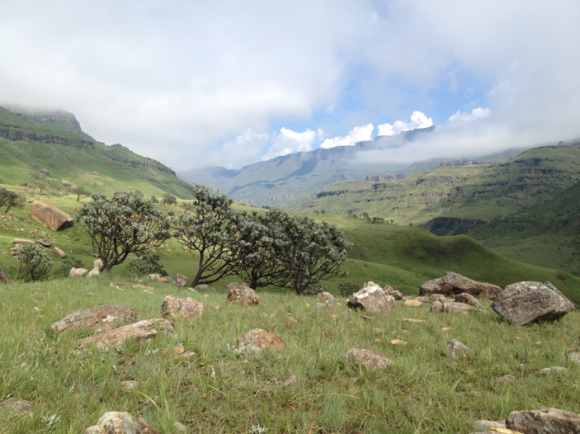A new study just published in the Zoological Journal of the Linnean Society has increased the diversity of southern African horseshoe bats by three species.
Using a range of techniques from acoustic analysis of bat echolocation calls to molecular DNA analysis and morphological studies of the skull, noseleaf and penis bone, led by Professor Peter Taylor from University of Venda and the DST-NRF Centre for Invasion Biology and an international team of co-workers, the study highlighted the narrow distribution range of these new species, most of which are associated with mountain or hill habitats.
One of the species found during the study, the Gorongosa horseshoe bat (Rinolophus gorongosae) appears to occur only within the borders of Gorongosa National Park in Mozambique and possibly also on nearby Mount Inago. With a mass of only 5g, this “dwarf” becomes Africa’s smallest horseshoe bat and it is genetically distinct from neighbouring horseshoe bat populations.
“My students and I were recording this strange bat in the Soutpansberg Mountains with a peak echolocation call frequency of 100 kHz, which is not known to be associated with any described species. The species with the closest call is Swinny’s horseshoe bat but this species echolocates in a different frequency range around 106 kHz” explained Taylor.
It took captures of bats from two caves in Mozambique by the research team to establish that this 100kHz-frequency bat was similar in appearance to Swinny’s bat (Rhinolophus swinnyi) from South Africa, but quite distinct in its call frequency, DNA composition and in a range of other morphological characters.
While Swinny’s bat is restricted to the southern parts of South Africa’s Great Escarpment in the Eastern Cape and KwaZulu-Natal provinces, one of the new species, named Rhinolophus rhodesiae, occurs in South Africa along the northern parts of the Escarpment from KwaZulu-Natal northerwards to the Soutpansberg Mountains, extending into Zimbabwe, Zambia, Angola, Malawi and Mozambique and possibly into Tanzania, following mountains associated with Africa’s Rift Valley. Based on differences in the penis bone, the two related species are thought to co-occur together at one cave in KwaZulu-Natal (Ferncliff Cave in Pietermaritzburg).
“This study highlights the important role of ancient mountain-forming processes in the speciation of horseshoe bats”, says Taylor, “This has important conservation implications as it reveals that species have narrower ranges than previously thought, and current threats to mountain habitats, like burning, afforestation, alien invasions and climate change, can increase the extinction risk for these vulnerable species”.
The full paper can be viewed at
For more information, contact Peter Taylor at Peter.Taylor@univen.ac.za




